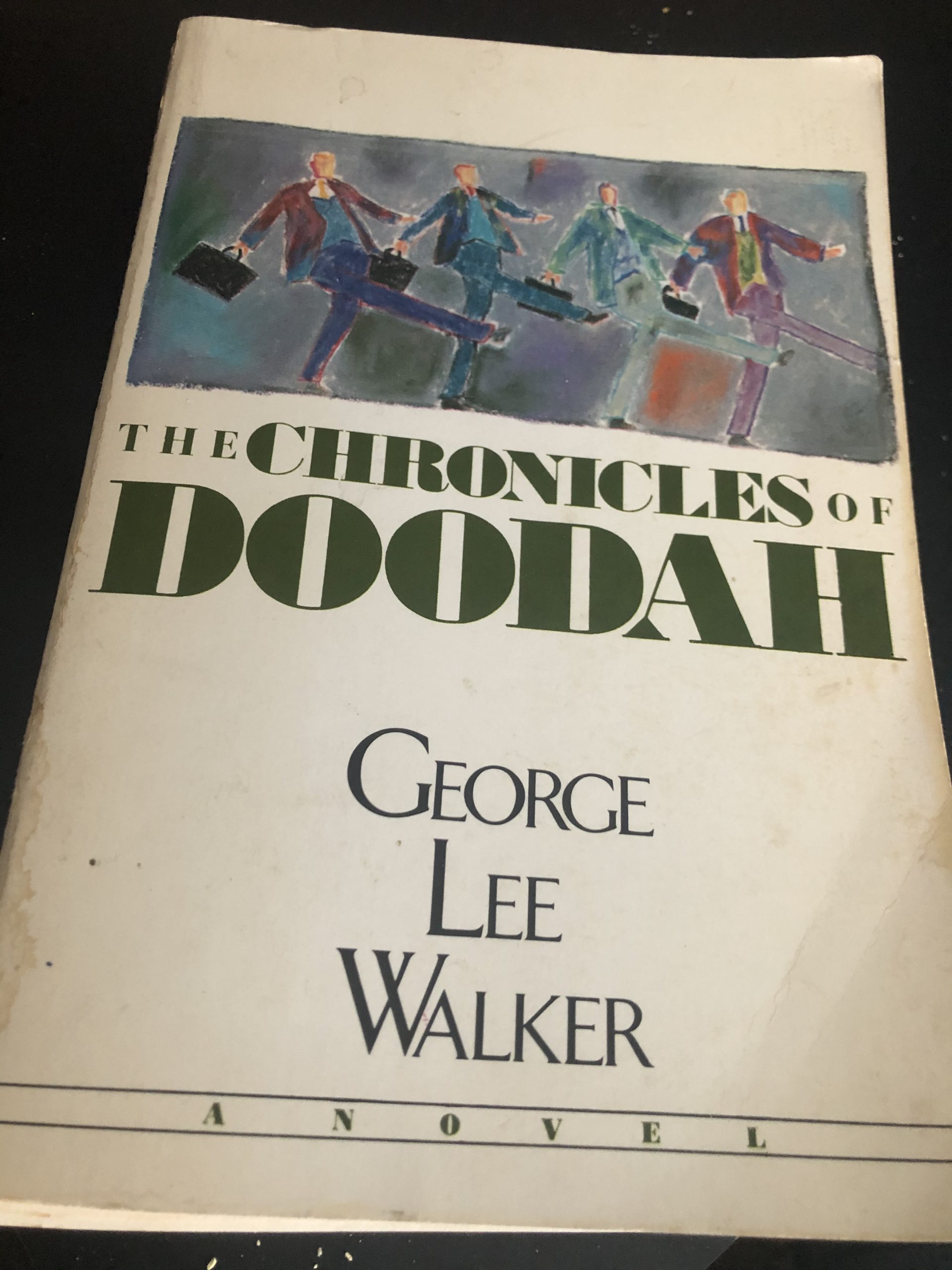Speechwriting, for Ill
January 15, 2024
The vengeful pen behind “segregation forever” and “The Outlaw Josey Wales.”
Review of Unmasking the Klansman: The Double Life of Asa and Forrest Carter, by Dan T. Carter. Athens GA: NewSouth Books, 2023.
Sunday marked the fifty-first anniversary of the most famous and consequential gubernatorial address in American history. You may well recognize the last six words of the defiant challenge declared by the speaker, incoming Alabama governor George C. Wallace, on January 14 1963. Take note of the rhythmic buildup to the triad in the full sentence they conclude, and to the theme of noble aggrieved Southerners being roused to resist a mighty and awful federal government:
In the name of the greatest people that have ever trod this earth, I draw the line in the dust and toss the gauntlet before the feet of tyranny, and I say segregation now, segregation tomorrow, segregation forever!
Historian Dan T. Carter, a biographer of the man who brandished this verbal sword, has now published a biography of the man who forged it, speechwriter Asa Carter. (Author and subject are not related. Disclosure: Dan Carter and I participate in a small running email conversation thanks to a mutual friend.) Unmasking the Klansman is a scrupulous and compelling account of a wild man with a talent for fomenting racist opposition to the elite power structure: first as a local agitator, second as a line-crafter for a national figure, and third—in a bizarre but in the biographer’s hands totally believable twist—as a popular novelist who swapped out his birth name and actual life for a fictional back story as a Cherokee Indian with a first name that paid tacit tribute to Nathan Bedford Forrest, the Confederate Army general who became the first Grand Wizard of the Ku Klux Klan.
Asa/Forrest Carter was a writer possessed of uncommon anger, wile, and ambition. Dan T. Carter punctuates the narrative of his life with numerous boldfaced passages in which the author relates incidents from his own past growing up in the Deep South. He constructs a window onto an underside of mid-twentieth century American culture that has recrudesced in contemporary hate speech.
***
Born in 1925 and raised in Anniston Alabama, Asa Carter grew up among hundreds of Confederate monuments and read history textbooks venerating the antebellum South. Dan Carter explains that “collective memory of Yankee perfidy, Confederate bravery, and Black degeneracy eased the sting of defeat, poverty, and backwardness even as it justified the daily cruelties of white supremacy and Black oppression.”
A Seaman Third Class during World War II, Asa Carter eased the boredom of serving in the Pacific through books and conversations about politics. His peers, like his upbringing, inclined him to reactionary radicalism. By 1949 he was a radio commentator railing at Southern aristocrats as well as communists, Jews, and federal officers ramming integration down his listeners’ throats. Brown v. Board of Education was their second Fort Sumter.
Career setbacks hardened him. “Just as Carter’s abrupt dismissal from his naval officer’s training program (consigning him to seaman) seems to have been a major factor in his embrace of right-wing ideas, the loss of his public radio platform pushed him deeper into a growing network of violent white supremacists.” In 1955 he joined a chapter (Klavern) of the Ku Klux Klan. The author details how Carter parlayed his membership into a web of financial support and grassroots activism, wedging his way into both conventional and extremist politics in Alabama. He steered clear of violent incidents but spoke and wrote approvingly of the “strike forces,” whose at times gruesome activities the author recounts.
But he could not keep entirely clear of the trouble he praised and fostered. The FBI and IRS were on to him as were members of the press. At the end of the 1950s, his reputation and income plunging, Asa Carter latched onto George Wallace. Candidate Wallace accepted Carter’s prose contributions for his 1962 campaign while maintaining deniable distance. Carter drafted the inaugural address at the last minute, having focused his energies during the transition period on peddling ad space in a bogus inaugural program he produced.
The speech assailed the Fourteenth Amendment to the Constitution as “illegal” and condemned the worldwide cabal strangling the free enterprise system and white freedoms in America:
…the international racism of the liberals seek to persecute the international white minority to the whim of the international Colored majority…
…if we amalgamate into the one unit as advocated by the communist philosophers then the enrichment of our lives, the freedom for our development, is gone forever. We become, therefore, a mongrel unit of one under a single all powerful government, and we stand for everything…and nothing.
The first issue on the inaugural agenda was a promise to ban liquor in the governor’s mansion and to eliminate liquor agents in the state, an ironic move given Carter’s heavy drinking, but a shrewdly populist one:
I am happy to report to you that the big-wheeling cocktail-party boys have gotten the word that their free whiskey and boat rides are over, that the farmer in the field, the worker in the factory, the businessman in his office, the housewife in her home have decided that the money can be better spent to help our children’s education and our older citizens…
Wallace made his national ambitions known: The fight against tyranny would be carried from Alabam to the other states through the sons and daughters of Southerners who had moved across the country. There was a lot more doctrinal exposition in the address than programmatic promises, growing thick at times. But those six words about segregation resounded instantly and loudly. Martin Luther King Jr., whose holiday we commemorate today, included a veiled response to the Wallace speech in his oratorical monument seven months later.
I have a dream that one day, down in Alabama, with its vicious racists, with its governor having his lips dripping with the words of “interposition” and “nullification” – one day right there in Alabama little black boys and black girls will be able to join hands with little white boys and white girls as sisters and brothers.
***
Carter wrote speech material for Wallace’s 1964 presidential run and his wife Lurleen’s term as successor governor. Then George dropped Asa. Carter ran for office himself several times, losing badly. His drunkenness resulted in a conviction. More people in Alabama political circles found out about him. In 1973, defeated, dissolute, discredited and desperate, he reinvented himself. He wrote a novel, first entitled Gone to Texas, where indeed he and his family moved. Retitling the book The Rebel Outlaw: Josey Wales, the now Forrest Carter, tanned sufficiently to pass as a Native American, sold the manuscript to more than one publisher and to Clint Eastwood, who used it to make a popular film in 1976. The eponymous hero is a farmer in Kansas in 1858 who discovers his wife and daughter murdered by abolitionists. Seeking revenge, he joins a band of Confederate raiders during the Civil War and escapes capture numerous times thereafter by killing his pursuers. (Echoes of Jesse James.)
Carter, in his new persona, wangled a promotional appearance on The Today Show with the help of two “tribal chiefs,” one real and one honorific. Alabama people saw the telecast, recognized Asa, and alerted people at NBC, but no scandal ensued. Carter tried to sell a sequel to Eastwood but, as with Wallace, the movie star/director soon wanted no part of him. Carter published a fictionalized autobiography, The Education of Little Tree, that years later became a standard text in young adult classrooms, and a novel about Geronimo that won plaudits from the Western literary giants Larry McMurtry and Dee Brown.
Why the transformation from Southern defender to Cherokee advocate? Dan Carter notes that whites “found it useful to draw a distinction between the brave and independent ‘red man’ and inherently inferior Blacks.” The federal government served as a common enemy.
Asa/Forrest Carter died in 1979 after a fistfight with one of his sons. He was extremely drunk at the time. Dan Carter closed the loop on his identity shift in a New York Times op-ed in 1991, one month after The Education of Little Tree reached the top spot on the newspaper’s paperback best-seller list. The book was a hoax, Carter wrote, and so was its author.
***
In our day incendiary prose keying on racial animus and populist resentment befouls the mediascape, perhaps to the point where it has lost its capacity to shock and gain public attention. Dan Carter concludes that “the nation’s growing plutocracy has bankrolled the politics of fear;” contemporary voices at one with Asa’s perspective on the world can rake in millions of clicks and dollars without having to get past the erstwhile gatekeepers of professional journalism in order to be heard. Segregationism now self-sustains with no need for its exponents to wear white hoods and masks. Indeed, masks of another kind have been vilified as a tyrannical instrument of the same old forces that the new populists conjure up and exaggerate. Dan T. Carter traces the through line from the schoolhouse doors of the 1950s to the schoolroom clashes of the 2020s, providing historical context but, alas, little consolation with the understanding it stirs.





